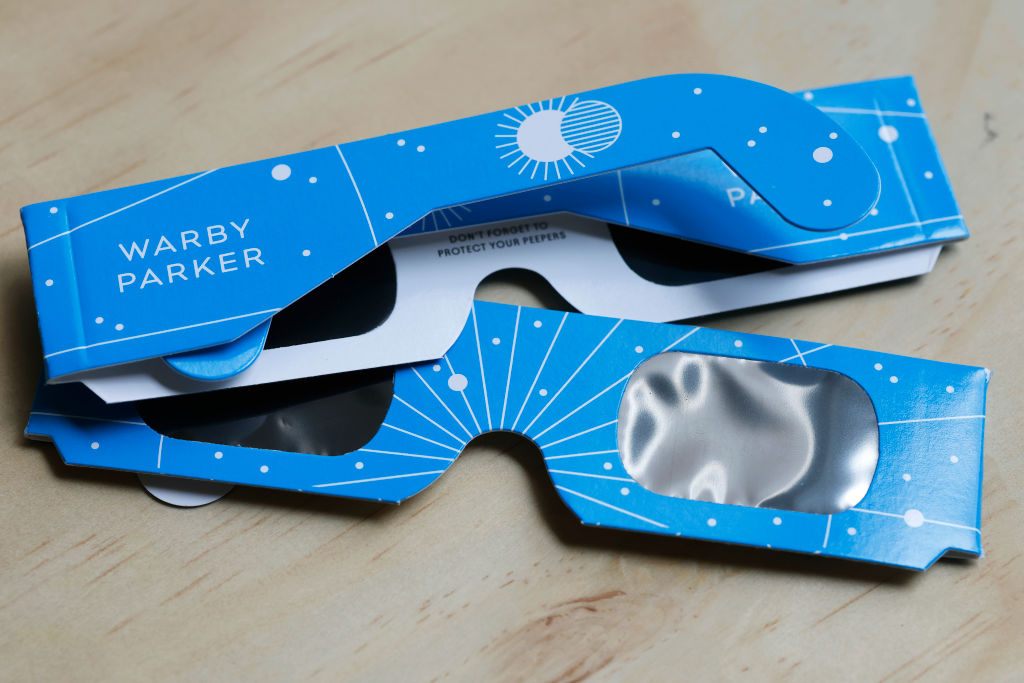Monday's total solar eclipse is one of the highly anticipated events this year.
Join NBC Bay Area starting at 10:13 a.m. on April 8 for live coverage of the solar eclipse. A livestream of the coverage will also be available on this page, so bookmark it and check back Monday morning to watch it.
Connected TV: You can also watch our solar eclipse coverage on Roku channel 4125, Samsung TV Plus channel 1035 and Amazon Fire TV. Click here to see where else we're streaming on connected televisions.
Get a weekly recap of the latest San Francisco Bay Area housing news. Sign up for NBC Bay Area’s Housing Deconstructed newsletter.
What to know about the total solar eclipse
Total solar eclipses happen because the sun is about 400 times bigger than the moon, but the moon is about 400 times closer to Earth — so, down here, they look like they're the exact same size. It is a cool thing to watch. But here's the bad news: we're not going to get that spectacular view here in the Bay Area.
You see, total solar eclipses happen somewhere on the planet about once a year. But you have to be in the right place to watch them — and a lot of times, they happen over water, or places that are hard to get to. So what makes this eclipse such a big deal is just how many North American cities fall right under the path of totality — meaning they'll experience up to four minutes of pitch-black sky right in the middle of the day.
The path of totality
According to NASA, the eclipse will actually start way out over the Pacific Ocean, early in the morning. It'll make its first landfall on the west coast of Mexico, near the beach town of Mazatlán. The sky there will start to darken around 10:13 a.m., and they'll experience totality at 11:07 a.m. Pacific time, for 4 minutes and 17 seconds.
Then, the eclipse will cross through the inland portions of Mexico and into Texas, right over parts of San Antonio. And here's where it gets tricky. Even within a single city, some areas will be treated to view of the total eclipse, while others will not.
Remember the Alamo? Well, visitors there will only see a partial eclipse. But if you drive about 15 minutes northwest of the Alamo, you can grab tacos at Chacho’s Tex-Mex restaurant just off I-10 while watching the total eclipse for about 30 seconds. Or keep driving all the way out of town to the original Rudy’s Bar-B-Que, and you'll get three whole minutes of totality — and some pretty good brisket. It's a good illustration of just how narrow the path of totality is: just a few miles can make a big difference.
Minutes after San Antonio, the total eclipse will pass through Austin, where towns on the western outskirts of the Texas capital are expected to have some of the clearest weather to watch the eclipse. After that, the eclipse will darken the skies in Dallas — including three minutes of totality at DFW Airport around 1:40 p.m.
Statistically, a total eclipse in any given location is a once-in-a-lifetime event. The probability is that it will happen about once every 400 years. But sometimes, a city wins the celestial lottery. After passing through Little Rock, the moon's shadow will head straight for Carbondale, Illinois, the little college town that also saw the total eclipse in 2017.
After that, it's Indianapolis, Cleveland, and Buffalo, where Niagara Falls will be in totality for three and a half minutes. Then, it's up along the Canadian border, where Montreal and Burlington, Vermont will see totality at the same time, around 3:26 p.m.
Viewing the solar eclipse in the Bay Area
Here in the Bay Area, we'll be getting a 35 percent partial eclipse, a little after 11 a.m.
The sky might darken a little, and if it's a clear day, you can actually see evidence of the partial eclipse by looking at shadows on the ground — they'll take on a "C" shape or have a little chunk taken out of them.
You can also get some of those cardboard eclipse glasses — sold at many places including the Exploratorium in San Francisco — and remember, don't look at the sun without them. Here's a guide on what to know about solar eclipse glasses, and how to tell if they are safe.
By the way, if you want to watch the total eclipse from here in the Bay Area, the Exploratorium plans to livestream the whole thing on its website, from locations in Mexico and Texas.



